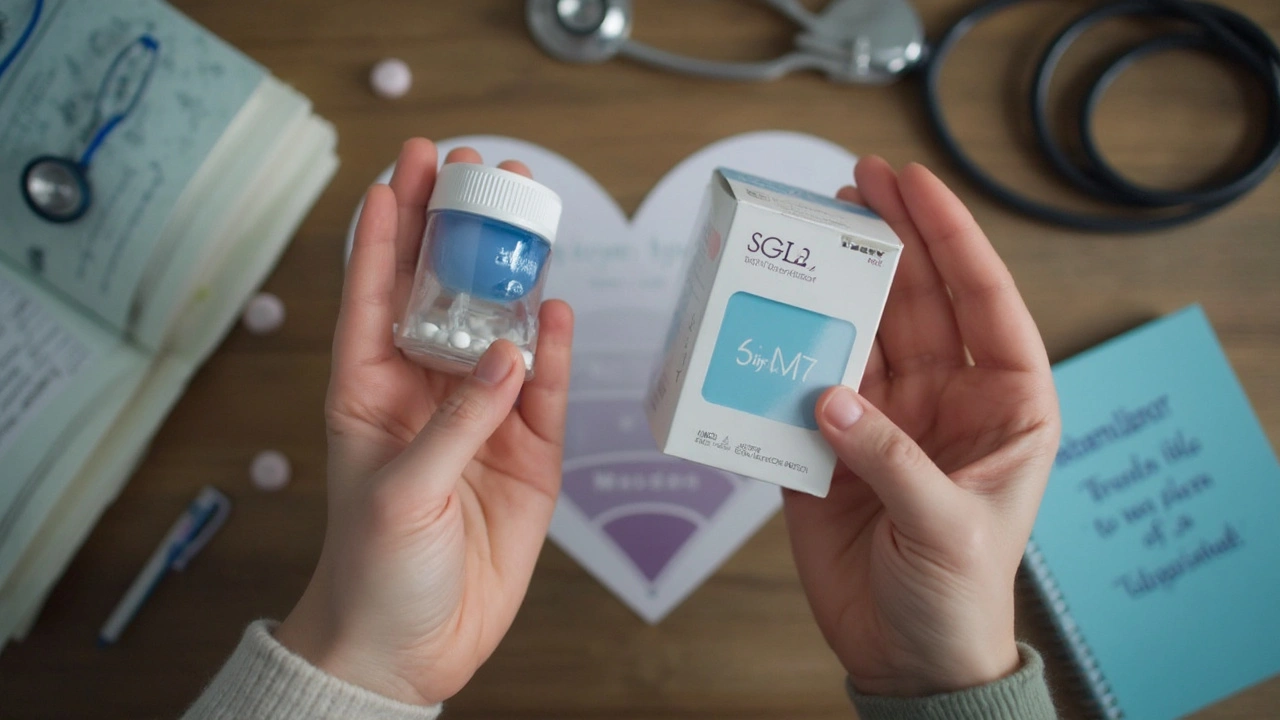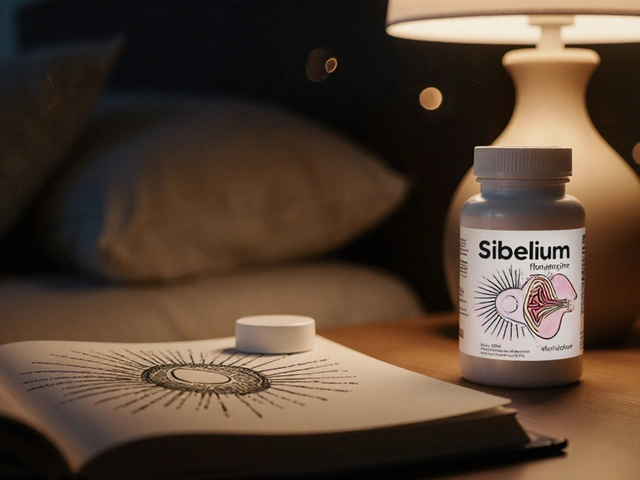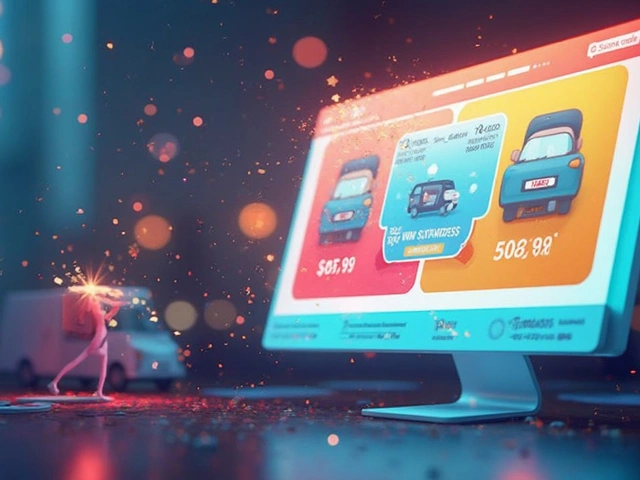Imagine sitting across from your doctor, weighing the pros and cons of diabetes meds, and realizing one choice might protect your heart while the other could leave it vulnerable. This dilemma is shaking up diabetes treatment everywhere as more people find themselves at the crossroads of managing both blood sugar and heart health. The real surprise? Not all diabetes medications are created equal when it comes to heart failure risk. And right now, two big players—SGLT2 inhibitors and Glipizide—are under the microscope for how they measure up where your heart is truly concerned.
How Glipizide Works—And Where It Falls Short
Glipizide isn’t new. Doctors have turned to this sulfonylurea for decades to lower blood sugar in type 2 diabetes. On paper, it does its job: it nudges the pancreas to release more insulin, quickly tackling those high glucose numbers. That’s why so many people reach for it, especially if they want an affordable option or if newer meds don’t fit their plan.
But there’s a catch. Glipizide (and other sulfonylureas like glyburide and glimepiride) comes with a known downside for heart health. They’re effective in the short term, but long-term studies have painted a worrisome picture. Over time, the body’s insulin reserves can get depleted—a problem for people already at risk for heart disease. And hypoglycemia isn’t just uncomfortable; frequent low blood sugar can bump up the odds of arrhythmias and other cardiac problems.
The ACCORD and ADVANCE trials—each enrolling over 10,000 adults—looked for proof that lowering blood sugar with sulfonylureas would cut cardiovascular events. The result? No real benefit, but a slightly higher risk of heart failure hospitalizations compared to some other diabetes drugs. So, if you’re counting on Glipizide to have your back against heart failure, the evidence so far just isn’t reassuring.
You might think, "It’s been around for ages—it has to be safe, right?" That’s part of its appeal, but recent real-world data, like a 2023 population-based study from Sweden, linked sulfonylurea users to a roughly 18% higher risk of hospitalization for heart failure than those on newer meds.
Doctors are starting to rethink Glipizide’s place in diabetes care, especially for anyone with heart disease, symptoms of heart failure, or multiple risk factors. Insurance and cost still drive many decisions, but when you put heart health front and center, Glipizide can seem like yesterday’s news.
SGLT2 Inhibitors: The Heart-Smart Heavy Hitters
SGLT2 inhibitors haven’t been around as long as Glipizide, but wow, have they changed the game. These drugs— dapagliflozin, empagliflozin, and canagliflozin, just to name a few—block the kidney’s sodium-glucose transport route, causing extra sugar to be peed out instead of sticking around in your blood. But the real magic, and the reason doctors are excited, goes way beyond sugar.
Back in 2015, no one expected what the EMPA-REG OUTCOME trial showed. Over 7,000 adults with type 2 diabetes and established heart disease took empagliflozin, and not only did they see fewer heart attacks and strokes, but heart failure hospitalizations dropped by a whopping 35%. Yes, you read that right—35% less chance of winding up in the ER or intensive care for heart failure. This isn’t a quirky finding, either. The CANVAS and DECLARE-TIMI 58 trials echoed those benefits across thousands more patients, and newer real-world meta-analyses keep confirming the theme: SGLT2 inhibitors seriously lower the odds of heart failure, even for those with no previous heart trouble.
It’s not just about survival. SGLT2s ease symptoms, cut down on hospital stays, and even seem to help the kidneys hang on longer. A 2024 update in The Lancet showed that these meds benefit people with heart failure whether or not they have diabetes, making them unique among glucose-lowering drugs.
Want to know who’s most likely to get a prescription? People over 50 with diabetes and cardiovascular concerns are at the top of the list, but guidelines now push for SGLT2 inhibitors in anyone with heart failure, often on equal footing with standard heart meds like ACE inhibitors and beta-blockers.
Side effects can happen—think urinary tract infections and rare genital infections—but the benefits are hard to ignore. Just to put the results in black-and-white, check out this simple table:
| Drug/Class | Heart Failure Hospitalization Risk | Mortality Benefit |
|---|---|---|
| Glipizide (Sulfonylurea) | Neutral or Slight Increase | No significant reduction |
| SGLT2 Inhibitors | 35-39% Lower Risk | Significant reduction (up to 14%) |
That’s a massive leap, especially for a class of drugs never intended for heart protection in the first place. Suddenly, the question becomes: why would you stick with Glipizide if your heart’s at risk?

Comparing Real-World Results and Patient Experiences
It’s one thing to quote trial numbers and patient populations. What about real life? Here’s where things get interesting. Large, observational studies—think millions of patients’ records—show a clear pattern: people on SGLT2 inhibitors get fewer calls from the hospital, spend less time in the cardiac unit, and have better odds at a longer, complication-free life compared to those on Glipizide.
Doctors now take family history, blood pressure, and even a patient’s smoking status into account when picking between these meds. Imagine being 55 with diabetes and a borderline echocardiogram—your odds for heart failure go up fast, making SGLT2s the no-brainer pick. But even folks with "just" diabetes and no overt heart issues rack up benefits, with one multinational review tallying a 27% overall drop in hospital admissions for heart failure in new SGLT2 users.
What do patients notice first? Besides stable sugars and fewer low-sugar crises, many report feeling less winded climbing stairs or playing with their grandkids. They don’t suddenly drop weight or run marathons, but day-to-day life quietly improves. For people who remember frequent trips to the ER or nights rigged to IVs, these changes feel like a miracle.
Cost still trips up patients in the U.S., since SGLT2 inhibitors can be pricey without insurance. Some programs and manufacturers now offer copay cards or tiered assistance. But even when price is a concern, it’s worth browsing the field—sometimes a switch makes more financial sense than another hospital stay. Curious about your options? Check out this list of cardio-protective alternative to Glipizide and see what might fit your treatment plan better.
Doctors no longer reach for Glipizide by default. They weigh your kidney function, any history of swelling, and look at medication lists to avoid dangerous clashes. It’s about personalizing your care, not just following the old routines.
Hidden Dangers: When Glipizide Puts Stress on the Heart
If you’re still taking Glipizide, you might wonder, “Is it really that risky?” Recent studies—like a 2024 JAMA meta-analysis—suggest the concern is pretty real, especially if you’re older or have high blood pressure, known coronary artery disease, or even mild kidney issues.
One big problem is hypoglycemia. Glipizide can cause blood sugar to drop too low, making your heart race, sweat pour, and sometimes leading to fainting. For someone with blocked arteries, this extra adrenaline surge can be dangerous—even fatal. Add dehydration (a risk for anyone in Texas or Florida in summer), and the heart has to work overtime. This can tip the balance into heart failure, especially in folks with existing heart problems.
There’s also new genetic research. Some people simply metabolize sulfonylureas differently, spiking their risk for serious heart rhythm troubles. While gene tests aren’t routine yet, doctors know to watch for weird palpitations or shortness of breath in anyone taking Glipizide.
Let’s not forget weight. Glipizide can cause weight gain, especially in people already prone to putting on pounds. Added weight is one of the biggest risk factors for heart failure; SGLT2 inhibitors, by contrast, actually help with modest weight loss—another win for the new kids on the block.
Doctors keep a close eye on anyone who needs Glipizide long-term, running regular blood tests and swapping meds sooner if heart, kidney, or liver trouble pops up. There’s no need to panic, but it pays to ask your doctor if there’s a safer, newer alternative worth considering.

Switching Safely: Making the Move to SGLT2 Inhibitors
If you’re reading this and thinking, "Should I switch?"—you’re not alone. The answer depends on your medical history, insurance, and how your body handles current meds. But for most people with any heart risk, SGLT2 inhibitors now land higher on the doctor’s list.
Switching isn’t complicated, but there’s a rhythm to it. Usually, the dose of Glipizide is tapered down over about a week while the SGLT2 inhibitor is gradually started. Doctors watch for signs of dehydration (since you’ll pee more), track kidney numbers, and ask about rashes or urinary issues. Nearly everyone sees smooth sailing, but a little extra water and a short break from alcohol can help dodge side effects.
Sometimes, people combine SGLT2 inhibitors with other diabetes meds—like metformin or even low doses of insulin—to fine-tune control. This “cocktail” approach isn’t just about blood sugar anymore; it’s all about the big picture: keeping your heart beating strong for as long as possible.
One tip: let your doctor know if you’re planning any stressful activity, like a surgery or marathon. Your medication plan might need to flex for a few days. Be open about side effects and ask if you qualify for any discount or patient-assistance programs. It pays, literally and physically, to shop around and stay proactive.
Be sure to check with a real expert before making any changes. Every switch is personal, and a brief conversation can make your transition seamless and stress-free. Here’s something hopeful: it’s never too late for your heart to benefit. Even patients in their 70s or 80s see fewer ER visits and stronger hearts with SGLT2s.







Greg DiMedio
July 17, 2025 AT 23:27Oh wow, SGLT2 inhibitors vs Glipizide, how groundbreaking! Like we've never heard before that not all heart meds are created equal. But seriously, this article sounds like it’s gonna serve the cold hard facts instead of the usual fat-free fluff.
Most people don’t realize that diabetic heart care has layers and that these drugs actually have different vibes for your ticker. I mean, if you’re gonna change your care plan, might as well do it with something that doesn’t just act like a band-aid, right? Anyone else think they’re overselling Glipizide here? It’s been around forever, but maybe it’s not the golden oldie we assumed it was.
Also, I’m curious if the article touches on side effects or just heart failure risks because those matter too.
Badal Patel
July 19, 2025 AT 03:13Ahhhh, the eternal quest to dethrone the venerable Glipizide!!! One must ask, are these "latest research and expert insights" truly groundbreaking or simply another wave in the vast sea of pharmaceutical hype??!!
The very notion that all medications for heart failure are not created equal seems like an obviiuus truism, yet here we are, sensationalizing what may be incremental at best. Does SGLT2 really offer tangible clinical advantages or are we hypnotized by shiny new acronyms and fancy data points???
Pray tell, has the article dissected the long-term ramifications or simply cherry-picked stats to fuel the hype train???!!
KIRAN nadarla
July 20, 2025 AT 07:00It's astonishing how many people overlook the importance of precision in interpreting medication data. Firstly, the differentiation between SGLT2 inhibitors and Glipizide must be methodically analyzed, not just summarized in broad strokes.
Moreover, have the authors provided sufficient statistical evidence with proper controls, or is this just an anecdotal narrative cloaked in scientific jargon? Accuracy in presenting heart failure risk ratios is critical, lest misinformation prevails.
For anyone serious about diabetes management, it's imperative to scrutinize the methodology behind these claims.
Kara Guilbert
July 22, 2025 AT 14:33Well, isn't it nice when someone finally breaks down the complex truth about heart meds? 🙂 Most people just blindly trust their doctors or what ads say, but this kind of info helps you actually understand what you’re putting in your body.
I’m all for anything that can help reduce heart failure risks, especially for those living with diabetes. It’s scary how one wrong pill can mess things up more than help.
Still, I wish articles like this would simplify the jargon a bit more though; some parts had me scratching my head.
Sonia Michelle
July 24, 2025 AT 22:07This is exactly the type of informed discussion that we need more of in the realm of health care. It’s empowering to see practical advice combined with research so patients can make decisions that truly support their heart health.
What I'm particularly interested in is how this knowledge can be integrated into patient-doctor conversations for more personalized care plans. Are doctors ready to pivot from traditional meds like Glipizide to newer agents based on this evidence?
We must advocate for access and education to ensure no one is left behind due to lack of information.
Neil Collette
July 26, 2025 AT 01:53Well, isn't it just fascinating how the pharma world is always unveiling one miracle drug after another? SGLT2 inhibitors this, Glipizide that. Meanwhile, the fine print often gets ignored.
Before everyone jumps on the bandwagon, I’d love to see the actual trial data — because heart failure risks might not be the only story here. What about renal effects? What about cost? And please, don’t get me started on how often newer drugs end up needing their own caution labels.
Anyone else think we’re in a hype cycle again?
James Lee
July 28, 2025 AT 09:27Ah yes, diving into the complexities of pharmacology with such a dramatically understated headline! To say these medications operate in different leagues is, frankly, an exercise in obfuscation.
One could argue that while the empirical data may hint at distinctions, the true philosophical question remains: what constitutes real protection for the human heart beyond mere biochemical interactions? Does the article offer such profundities or stay confined to pedestrian statistics?
I wager the ‘practical tips’ are no secret gems but rather the usual platitudes dressed up in clinical vernacular.
Dennis Scholing
July 30, 2025 AT 17:00This article seems like an excellent start to fostering more nuanced understanding among those managing diabetes and heart health. It’s crucial that people grasp how SGLT2 inhibitors and drugs like Glipizide affect the heart differently, supported by strong evidence.
My hope is that healthcare providers will be encouraged to tailor treatments based on up-to-date research, improving patient outcomes overall.
Did anyone else find the practical tips section especially helpful? Sharing those could make a real difference in everyday management strategies.
Kasey Lauren
August 2, 2025 AT 00:33This gives me hope for people who are struggling with diabetes and worries about their heart health. It always feels overwhelming learning about different meds and risks, but breaking it down like this feels so much more manageable.
I wonder if there’s any info on lifestyle changes that pair well with these meds for added heart protection? Sometimes the little things make the biggest difference.
Feeling optimistic that better options and knowledge can really shift how people care for themselves.
joshua Dangerfield
August 4, 2025 AT 08:07I appreciate the focus on evidence-based differences here. It’s important to look beyond the headline drugs and understand how they individually impact the risk of heart failure.
Does anyone know if there’s comparative data on quality of life or patient-reported outcomes for SGLT2 inhibitors versus Glipizide? That seems like a critical piece of the puzzle when choosing the best therapy.
Also curious about whether this article discusses cost and insurance coverage, given how that affects practical access.
Abhimanyu Singh Rathore
August 7, 2025 AT 19:27Look, the data might be compelling but!!! Are we truly considering the entire spectrum of patient variability here??! The over-generalization of heart failure risk without acknowledging comorbidities, differing ethnic responses, and especially adherence challenges means this article might just be another over-punctuated exaggeration!
The devil is always in the details — the careful dissection of which populations genuinely benefit is necessary before heralding one drug over another!!!